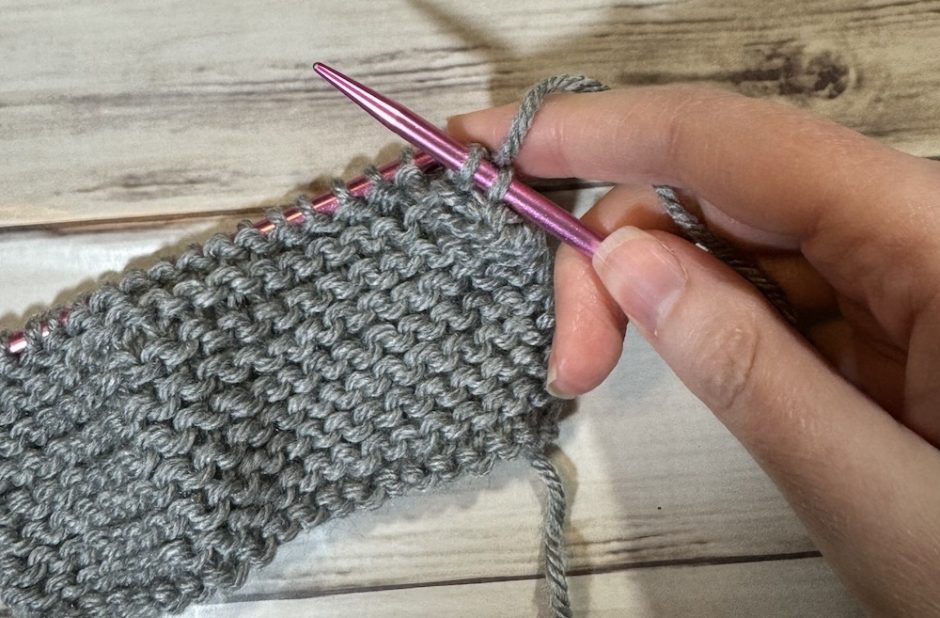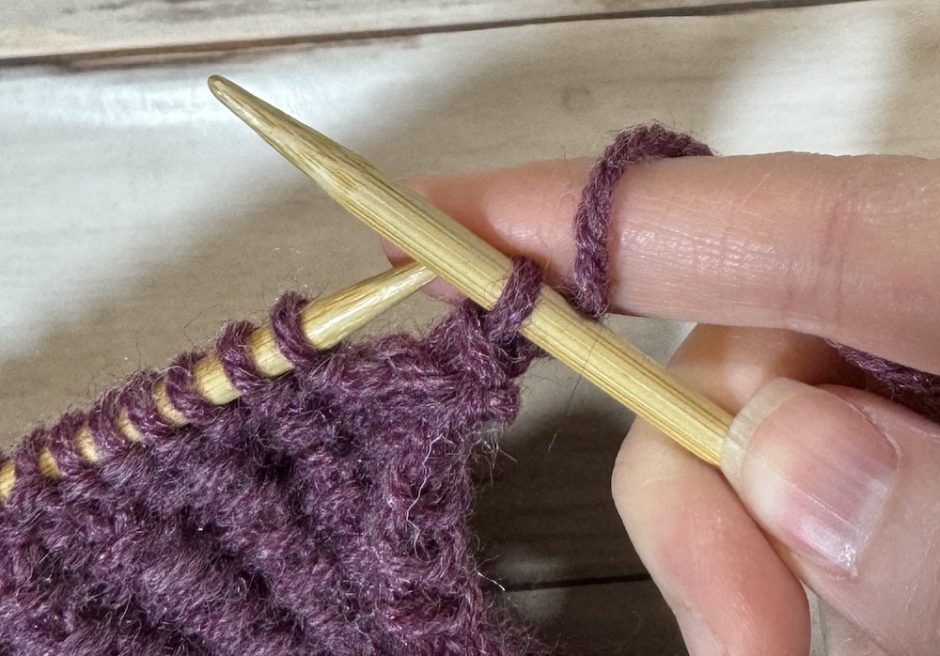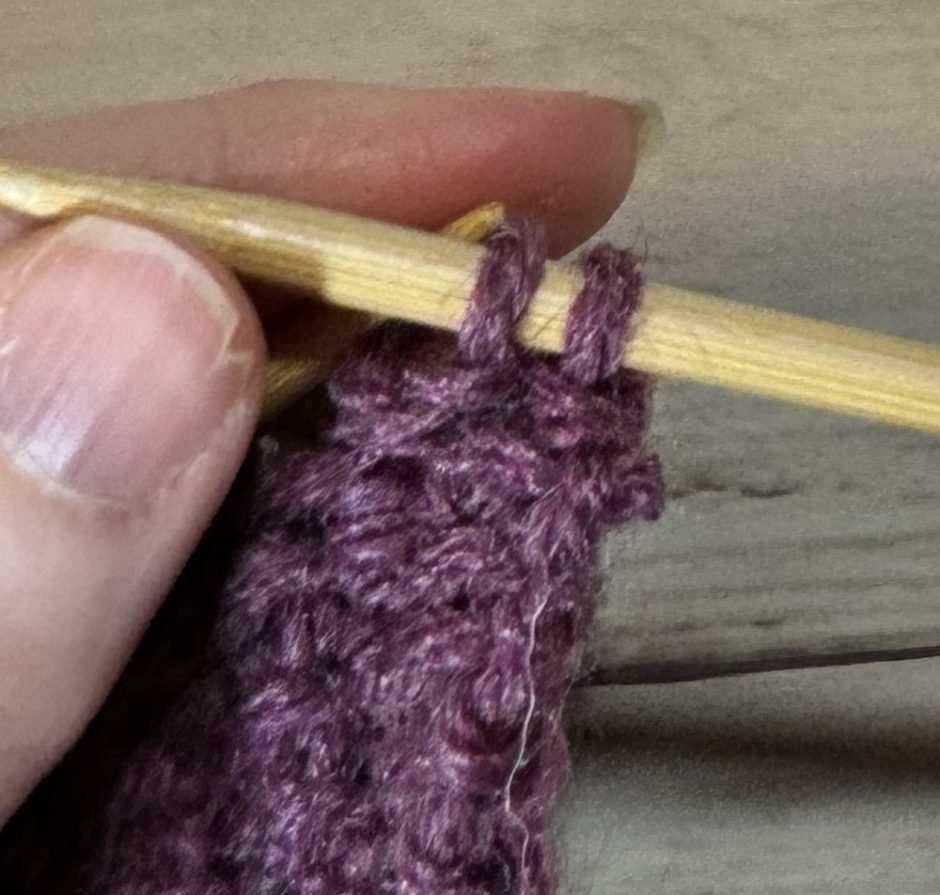Affiliate links may be included for your convenience. View our privacy and affiliates policy for details.
When you are ready to finish a knitting project, you have to get the stitches off the needles, so let’s learn how to bind off knitting!
What is a Bind Off in Knitting?

The bind off, sometimes also called casting off (to mirror casting on at the beginning of a project) is a way to close up the loops of your knitting and finish the project so it will be secure and not unravel.
There are several different methods that can be used for different purposes, but the standard bind off is generally just called binding off, it doesn’t have a special name.
Preparing to Bind Off

You don’t really have to do anything special to get ready to bind off knitting, just knit all the stitches of the last row. You’ll have knit all the length your project needs and otherwise followed the instructions of your project. Or if you’re just practicing, of course you can bind off at any time.
Sometimes you want to get the most out of you yarn so you might wonder how much yarn you need to save to bind off knitting. Generally the knitting experts out in the world will suggest you leave a length at least three times as long as it takes to knit a row of knitting on your project, but how do you know how long that is?

Another option is to use the width of your project as a guide. You can measure it and leave a length of yarn at least five times the length that your project is wide (example, if your project is 8 inches or 20 centimeters wide you’ll want to have at least 40 inches (101.5 cm) to bind off with. Leave a little extra if you can to have a tail for weaving in, or just because no guesstimate is perfect.
If you don’t have a ruler handy you can wrap the working yarn around your project loosely five or six times, which should give you about the same measurement.
Always err on the side of having a little yarn left if you can. Yarn chicken is a losing game most of the time.
How to Bind Off Knitting
To begin your bind off, start with the needle with the stitches on it in your left hand and the empty needle in your right as usual.

Work the first two stitches of the row as normal (here I’m just knitting, more on other options below). The yarn shown is Lion Brand Basic Stitch, which is a great one for beginners to practice with.

Slide the tip of the left-hand needle into the first stitch you knit.

Carefully lift that stitch up and over the tip of the right-hand needle, leaving the second stitch on the needle.

Work the next stitch.

Repeat in this manner across the row.

As you go you’ll see a sort of chain of vs on the top of the work. You want to make sure these stitches are about the same tension as the stitches in your project — not too tight or too loose. If you’re having trouble you can try binding off using a larger needle than the ones you used in your project.

When you get to the last stitch, work it in the same manner. You’ll have one stitch remaining on your right-hand needle.
Cut the yarn, leaving a few inches to weave in.

Use the knitting needle to pull the yarn up until that last stitch disappears.
Binding Off in Pattern
Another instruction when you bind off knitting that some patterns will include is to “bind off in pattern.” This is commonly found on ribbing and other knit-purl stitch patterns, and can give you a little more stretch in the bind off to match the stitch pattern.
It’s done exactly like it sounds: continuing whatever stitch pattern you were using, bind off your stitches as you go.

In this example I’m working a pattern that uses purl 1, knit 1 across the row. So, I work the first two stitches in pattern: purl 1, knit 1. (This sample uses Lion Brand Wool-Ease, another great option for new knitters.)

Then I pull the first stitch over the second stitch as before.

Next comes a purl.

Then I pull the previous stitch over. And so on down the row. This is a little trickier because you need to remember where you are in the stitch pattern, but other than that it’s as easy as knitting across the row would be.
As before, when you get to the end, just trim your yarn, leaving a tail, and pull through the last stitch.

As you can see, the bind off looks pretty much the same, but it has a nice amount of stretch in it to match the stretch in the stitch pattern.
While there are other ways to bind off knitting you will learn through your knitting journey, the standard bind off will get you through a lot of projects happily!




